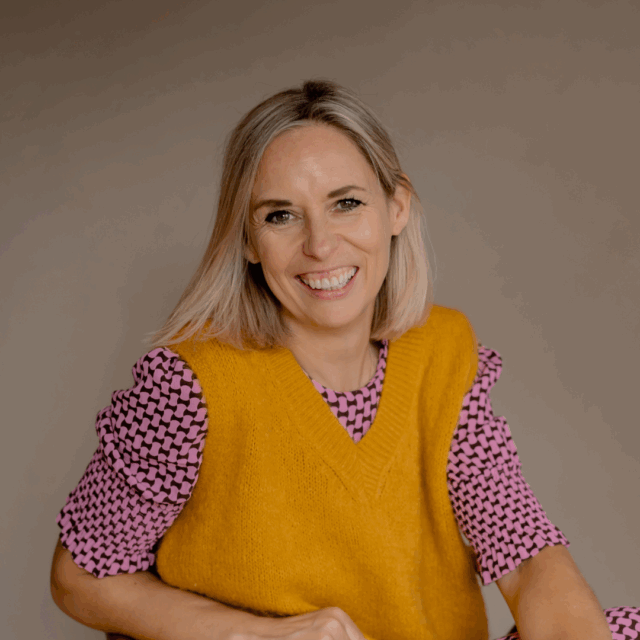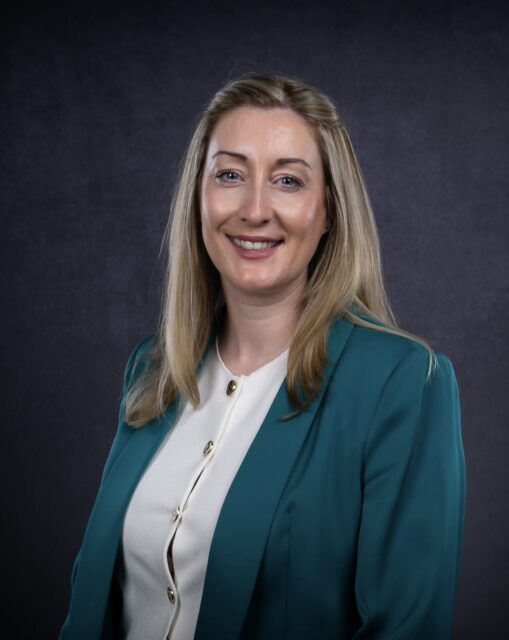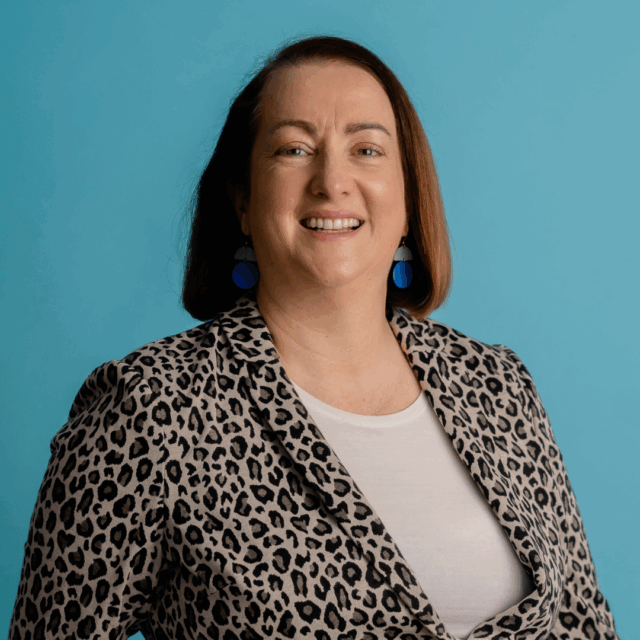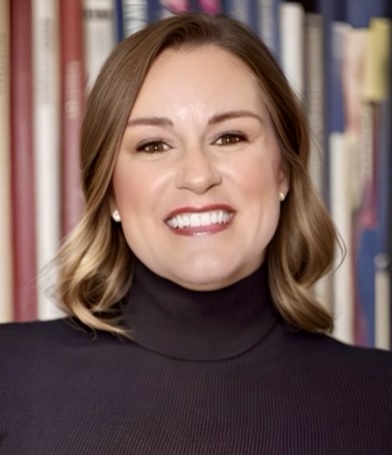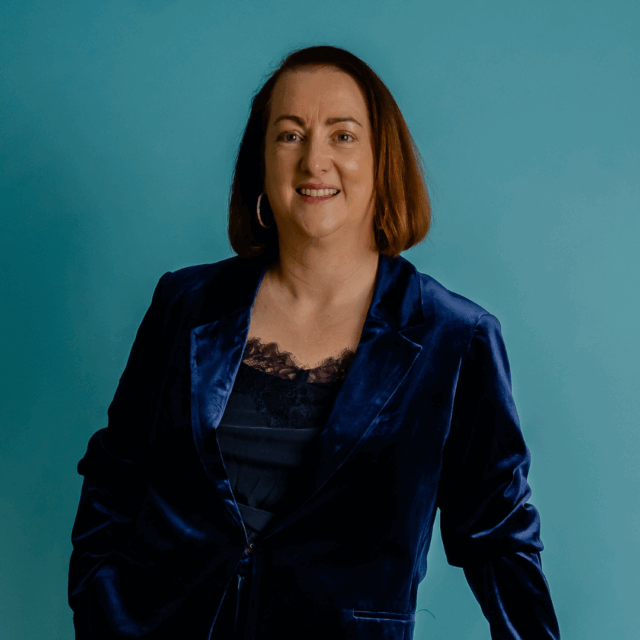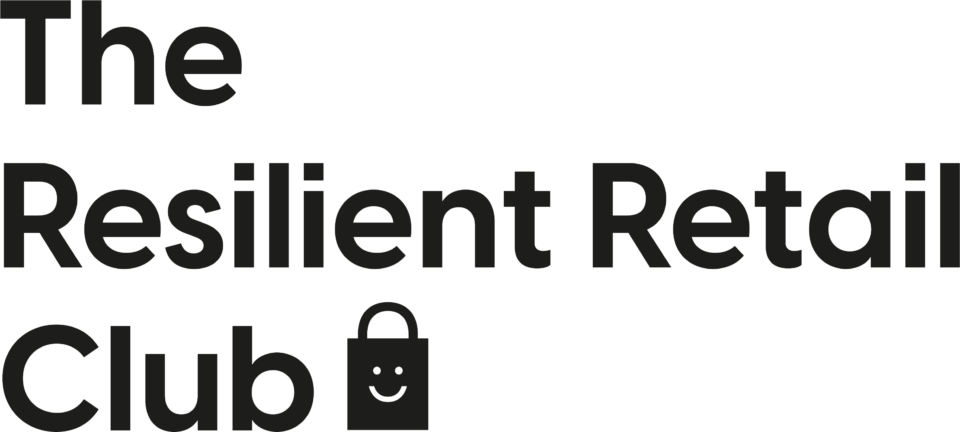Growing a Side Project into a Retail Brand with Jamie Watkins
Catherine Erdly: [00:00:00] Welcome to the Resilient Retail Game Plan. Hi, I’m your host, Catherine Erdly, a small business and retail expert. And I’m also the founder of the Resilient Retail Club, which is my membership group and mastermind for product businesses. You can find out more at resilientretailclub.com. And speaking of the mastermind today, I am joined by the fabulous Jamie Watkins.
He is one half of the duo behind the amazing interiors brand, Divine Savages. Jamie’s been the mastermind for a few months and he’s jumping on today to share his story, how they got started, what he’s learned along the way, and also a little bit about what it’s like being in the mastermind.
Welcome to the Resilient Retail Game Plan, a podcast for anyone wanting to start, grow or scale a profitable creative product business with me, Catherine Erdly. The Resilient Retail Game Plan is a podcast dedicated to one thing, breaking down the concepts and [00:01:00] tools that I’ve gathered from 20 years in the retail industry and showing you how you can use them in your business.
This is the real nuts and bolts of running a successful product business, broken down in an easy, accessible way. This is not a podcast about learning how to make your business look good. It’s the tools and techniques that will make you and your business feel good. Confidently plan, launch, and manage your products, and feel in control of your sales numbers and cash flow to help you build a resilient retail business.
Jamie, thank you so much for joining me on the podcast today. Do you want to start off by introducing yourself and your business?
Jamie Watkins: Yes, so I am Jamie Watkins, one half of Divine Savages, and we are, I guess you’d describe us as like a design duo. I run the brand with my husband Tom, and we [00:02:00] specialize in creating lovely wallpapers and fabrics with kind of a bold aesthetic, as you can see.
What led Jamie decide to start an interior business
Catherine Erdly: As you can see behind you, so beautifully illustrated. So tell us a bit about how you decided to get started. What made you decide to start an interior business and what made you decide to do it together, I guess.
Jamie Watkins: S o Tom’s background is in fashion. And he was working for an agency, fashion and branding and got to a point where he was ready for a bit of a change. And so he was thinking about something that he could do as like a side project or hopefully, potentially leading to like something that he could do full time.
I was working in TV, so very different. We were both starting to decorate our house. We bought a flat in South London. So we were starting to put our stamp on that. So interiors felt like a shared space that we both had a passion for. We’ve both always loved wallpaper.
So it started like that. [00:03:00] And then yeah, we decided to like, let’s create a brand and like, see where it goes. So it kind of was all very quite organic and we didn’t put too much thought into strategy and long term. It was always just meant to be kind of Tom’s side hustle and then, yeah, it grew and grew quite quickly and then became this bigger than we expected.
Kind of brand that I ended up quitting my job. Maybe yeah, three, three or four years in, I think. We run it like properly together. So yeah, it’s been a kind of crazy journey, but yeah, started from like that kind of seed of an idea of let’s do something fun.
Catherine Erdly: And what year was that? What year did you start?
Jamie Watkins: Oh, I think it was 2017 if my is right. Yeah, like late. I mean, yeah, we started thinking of the idea earlier, but things get in the way and you kind of also start to doubt yourself about, “Oh, we don’t know how to run a [00:04:00] business,” or “we don’t know how to make paper” and “where do we even start?”
So yeah, it took us a while to get going just because we had a few like, yeah like, is this really the right thing to do kind of thing?
Catherine Erdly: Yes.
Jamie Watkins: Eventually we got going and I think we’ve launched the brand in October 2017.
Catherine Erdly: Well, so seven, seven years and then and you started with wallpaper. That was how it started.
Jamie Watkins: Well, we were looking, we bought our flat and we just painted it all gray. Because that was very like the thing at the time and it was like easy, like we’ve decorated the flat in like a week. But everything was very neutral and gray and then it was maybe two years later we were like, “Actually this isn’t our vibe and we’re much more into pattern and color.”
I grew up with like my mum using wallpaper pretty much in every room in the house. I always had like a soft spot for wallpaper and I could see that like it was having a bit of a renaissance and like interiors [00:05:00] itself as well. Although we didn’t really like too strategically in terms of like wallpaper is having its moment.
Let’s do that, it was more. Yeah. So then I think it started maybe with we couldn’t find a shower curtain. We had like a bathroom. We didn’t have the budget to like revamp it. So we were like, “Oh, let’s just get a really cool shower curtain.” It’s like all the stuff was like white. So it’s something really bold for that space, but we couldn’t find anything.
So I was like, “Well, Tom, You’re obviously good at drawing, so why don’t you design something?” it kind of started there, and we managed to find someone that could print and make it. And yeah, lots of friends were asking, “where did you get that shower curtain from?” And we were like, oh, we just made it.
So that was the seed of oh, maybe we could sell these, or other people might be interested in them kind of thing, and it grew from there.
Catherine Erdly: Yeah, wow. And what was the point at which you realized, I mean, I suppose it helps when people start asking things like, where did [00:06:00] you get the shower curtain? Could I have one like that? But was there a moment where you realize, oh, this is going to work?
Jamie Watkins: Yeah, I don’t know, that one’s hard. I t hink once we, Tom had decided he wanted definitely to get out of the role he was in and do something different, so I think that was pushing us towards, “Let’s like put this out there and see what the feedback is.”
But it’s very much like Instagram that was the catalyst. We started like teasing the kind of brand launch, I guess you would call it. Even though it was like very low key, but we started like, we created the account way before October. I think it was probably like in the summer of that year and just started like teasing little snippets or even just like the logo like saying coming soon. And loads of people were like really interested in oh my god like Divine Savages, what is this? And so that kind of dialogue that dialogue with people started quite early on. Which I think was like, and again, Instagram was a very [00:07:00] different place seven years ago, but yeah, we kind of started creating a bit of like a community around Divine Savages, before we even had a website.
So I think we had that traction and that kind of, yeah, we kind of realized, “Oh, maybe like there’s something in this, like people seem to be really interested in it.”
Yeah. Even though we didn’t have any products at the time.
Catherine Erdly: And did they know it was an interiors brand? were you just saying Divine Savages?
Jamie Watkins: Yeah, I think we were pretty clear like, what we were going to be about in terms of interiors. Yeah, and that, I think, helped get those kind of interiors following us like, excited to know what we’d be coming up with.
The highlights of running an interior business
Catherine Erdly: Amazing. So what would you think have been some of the highlights then so far?
Jamie Watkins: Yeah, it’s always hard you know, like when you run a business. You’re always like in the moment, like doing stuff. So we’re not good at reflecting on what we’ve done. But yeah, off the top of my head we did a [00:08:00] collaboration with the Natural History Museum, Yeah, I think maybe in our second or third year. So that was amazing. We worked with them to create a collection of like wallpapers, fabrics, lampshades, cushions using their archive from the museum, which was amazing. So Tom got to like rummage through all their kind of like centuries of like designs.
Catherine Erdly: Yeah, such an iconic name and I love the fact that they were bold enough to do something like that. I think that’s really interesting and yeah, the collection itself is fabulous. Pulling from the archives, it fits so well and it’s a really nice.
Jamie Watkins: The synergy was like great. I mean, we just reached out to them and I think we were like me and Tom were talking about, okay, we must have been like a year in and we were like collaboration would be great just to help get our brand [00:09:00] out there a bit more. So it was just like a kind of, we just were joking like, “Let’s draw up a like wish list of who we’d love to work with,” and it was like big brands and Yeah, like Natural History Museum was like at the top. And yeah, we just like reached out to them somehow. Like through Google, managed to find a contact and yeah And they like we just thought we’d never hear back.
But yeah, they I think we kind of is very like the stars were aligned. They were kind looking to get into interiors more with their like brand. They were doing like some work with Farrow and Ball on paint collection. And I think at the time, made.com, they were doing some like kind of art prints for the home.
Right. Yeah, and then we were like the third piece of that kind of interior story with our wallpapers and fabric. So, yeah, it was good. It was like amazing for us and really pushed Divine Savages like out there more , press wise and kind of [00:10:00] coverage. So that was great.
Catherine Erdly: It’s such a good example as well of just asking sometimes, you know, just the could happen? They’ll just never hear back.
Jamie Watkins: Yeah, exactly. And that’s what we thought would happen. And obviously it worked out much better. Other things we kind of, were stocked in Heal’s, which was amazing. Like our cushions and actually some of the Natural History cushions, we’re in Heal’ s and that’s like always been like one of our favorite kind of interior stores in London.
Catherine Erdly: Yeah.
Jamie Watkins: We loved to wander around, like way before we like worked in areas loving that store. So to like then walk around and see our cushions in there. It was amazing.
Catherine Erdly: Oh, that must be amazing. Yeah. I used to work on Tottenham Court Road and I used to go to Heal’s sometimes on my lunch break just to relief.
Jamie Watkins: Exactly. So, yeah, that was cool. Yeah, it’s been, like, a crazy ride.
How important is PR for an interiors brand?
Catherine Erdly: I wanted to pick up a little bit about [00:11:00] PR because first of all, I’d like to just ask because if anyone’s listening and they’re an interiors brand. Whether that’s wallpaper, whether that’s more home furnishings or home accessories, things like that. Like how important do you think PR is in particularly in the interiors world? For an interiors business? Right.
Jamie Watkins: I would say, when we first started, it was all like, PR. Ooh what actually is it? It was kind of this strange place that is always a bit hard to work out what’s going on. But yeah, I think in interiors it’s it is quite key. I think obviously you have, there’s a lot of like outlets, magazines out there in the interior space.
So to get your brand in there, yeah, you just kind of need to be out there really. So yeah I mean, we were quite fortunate, Tom. One of Tom’s really good friends actually is in PR and interiors PR. So for us, it was quite an easy kind of [00:12:00] conversation to have with someone we knew and trusted and yeah, we ended up so they still manage our PR now, Emma and Josie.
So yeah, I think for us it’s balancing, I guess it falls in with like your advertising kind of area where you obviously pay for it with your kind of like PR. That’s more just natural editorial. And I think you just need for us, like we feel it’s important for Divine Savages to be constantly in the press.
So when people are reading, they’re kind of like, it’s hard to quantify. Like I can’t ever say that just because our cushion was featured in like living, et cetera. Like we sold like 20 cushions off the back of it. It doesn’t really necessarily work that way, but just brand reinforcement for us that when people then are ready to think about decorating their home.
They’ve seen Divine Savages a few times in trusted kind of places. Then they have a connection with your brand.[00:13:00]
Catherine Erdly: Yeah, no. And I think it’s something very particular to the interiors as well, because it’s a slightly different. Well, it’s definitely for something like wallpaper, where you’re actually going to stick it to your wall. You know, it’s a quite a long decision making process. Or it can be fairly long and it’s very considered.
And I think it’s always fascinating and important as a brand to be thinking about where is your customer when they’re making these decisions? And the interiors, I think then the role of the, like you say, like living, et cetera. I only ever buy home magazines when I’m about to do something redecorate your room or want ideas or something like that.
You don’t, I mean, I guess some people just buy them all the time because they love it.
Jamie Watkins: Yeah.
Catherine Erdly: But for most people, it’s very tied to the decision making process.
Jamie Watkins: Yeah, definitely. And I think, I mean, it’s changed as well. There’s like lots of more online sources and blogs and every magazine has their like online [00:14:00] equivalent. And normally filled with like lots of articles to do with like SEO. I mean, we get like really funny, like requests coming through for either quotes or images and they can be like super specific and I can’t.
An example off the top of my head, but like decorating with like wallpaper in like a closet or something, but like, that’s something that people are searching for online. So it was like great then for our brand to be in those search results.
Catherine Erdly: Yes.
Jamie Watkins: Quite quick and easy wins, really, for us.
Tips from Jamie on how brands can approach partnerships
Catherine Erdly: Yeah, for sure. So collaboration, so we talked about the Natural History museum. You’ve done quite a few collaborations. Do they all come about fairly organically as you said? But the Natural History museum, you had a list, you had the people that you, they were the top of it.
You reached out there and they responded. Is that pretty much how most of your collaborations have come about?
Jamie Watkins: Yeah, I’d say most of them. I think for maybe in the early [00:15:00] days we were kind of like, collab, collab, collab. It was, like, quite buzzword. People did reach out to us to collaborate. But I think as a brand like you need to think like why are we doing this and what’s it and do your two brands have something in common but also offer each other something else to push your brand into a new space.
Catherine Erdly: Mmm.
Jamie Watkins: Yeah so I’d like say think about collaborations quite carefully in terms of making sure it’s like the right fit for you. Yeah. So I’d say most of them, have come like pretty organically. The rest reaching out or kind of people finding us through Insta. And yeah, I think going forward yeah, we’re always open to collaborations.
We love doing it. It’s just now luckily they’re tending to get a bit like bigger in terms of like scope or the brand. So it’s more time from our side. There’s limited hours in the day. So now we’re [00:16:00] having to plan it out a little bit more.
So we’re actually working on something for well, it will come out in like summer 2026, I think that’s actually the process behind what we’re collaborating on takes a long time. So there’ll be lots of like work in between them, but the actual product probably won’t be out till 2026.
And then another one, which is that should be next year. So yeah, it’s kind of like keeping us busy and try and drop in like something else in between.
Catherine Erdly: Yeah, yeah, yeah. That’s such a good point. Thinking about it strategically, but yeah, but just not being afraid to just reach out if you see people that you do think would be a perfect fit.
Jamie Watkins: Yeah, definitely. And I think Instagram for us has been like a massive, that’s really where we’ve made all of our kind of connections with like even influencers or bloggers or like people in that interior space very early on when I said we were like teasing our launch. We’re really lucky that like [00:17:00] people like Kate Watson-Smythe and Sophie Robinson, like two really big kind of people in the interior space on Instagram started paying like attention or interest in what we were doing.
Catherine Erdly: Yes.
Jamie Watkins: Once we did launch, they shared some of our images on their feed or stories. And that really drove a lot more people to us.
And yeah, anyone starting out just start like connecting with people. Like on socials that you yeah, are like fans of or like respect or inspire you or eventually you’d love to connect better with and just start that kind of networking, I guess, like, at least like social networking.
Catherine Erdly: No, totally.
Jamie Watkins: Networking like early on.
Catherine Erdly: Yeah. And I think it’s interesting because obviously what you were doing where you have a very defined aesthetic, you know, it’s you and quite clear handwriting when you see something. It very much says [00:18:00] Divine Savages, right? You know, it’s so there will be people who will absolutely love that and respond to that.
And then there’s going to be the minimalists of this world who that’s just not ever going to be their thing. Right. And I suppose the kind of clearer you are about who you are, the more you’ll attract the people who love it, which is what you need.
Yeah, you need to know who’s into your product at the end of the day. And yeah, there is, there’s no point in us trying to tempt the kind of gray, sandy fans to us, cause it’s not what we do.
Jamie Watkins: I was going to mention like, I think back on the PR and like magazine, like area, I guess. Interiors is obviously a very visual kind of medium, like design. So photography, images are like key to it. So I think that’s why like PR for us, like we have that image bank now. We’re quite like seven years in. So thankfully we have a lot of images in our kind of library [00:19:00] that we can share.
So when journalists or editors or whatever, are looking for something. Like they are often quite specific requests, but hopefully we have something like that we share with them that kind of fits their brief.
Catherine Erdly: Right. Right. Yes. So, good imagery. And that was that a very conscious decision right from the get go? Good imagery.
Jamie Watkins: Yeah, definitely. Yeah. I think, I mean, and again, Instagram has changed so much in seven years. Everything’s elevated, like every, everyone like is so professional now with the kit and the tech. So yeah. And I mean, yeah, obviously like what we, the core of what we do is wallpaper. So yeah, those images are like key for us getting across like our aesthetic, the print, the design, the detail.
Catherine Erdly: Yeah. No, I think that’s so, so important. I think if you are going to make PR part of your strategy, then that imagery is really crucial. Isn’t it?
Jamie Watkins: Yeah, and just also making it easy [00:20:00] for the journalists and the writers that are creating those articles at the end of the day, I think they just want you need to make their life like, as easy as possible, because they’re so busy. And they get so many requests. So if you’ve got even if it’s just like a Dropbox, but really lovely organized folders with whatever it is, like that your brand does, but just make it like super clear.
So like we have living room, dining room, kitchen, like folders. And also it makes PR teams life easier if they get a request for a kitchen, they know they can go straight to that folder and that’s all our kitchen imagery. And then they can pick through that this most suitable kind of images for that request.
Catherine Erdly: Yeah, yeah. And I’m sure it makes a difference. I mean, I think about, you know, even my sort of very limited what I do for Forbes, where I’m writing. If somebody, if I send out somebody a request to say, can you give me a quote on XYZ and they immediately, you know, they write back very promptly [00:21:00] and give me something useful, then definitely guarantee that next time I need something along those lines and I’ll think of the person who was super helpful and, you know, gave me what I needed as opposed to someone who didn’t respond or took ages to respond or didn’t follow the brief.
And I’m sure it’s the same with magazines, right? You know, they know that you’ve got beautiful imagery and you’re super helpful and you make their life easier. Then why wouldn’t they lean on what you’re doing? And come to you again and again.
Jamie Watkins: Yeah, exactly. Yeah now we’ve like built up like a dialogue through our PR team as well, that also that’s a strength that they bring to the table. They know they can come to us and get like something really quick.
And then they’re often like working to deadlines. So yeah, that’s good. They can rely on us.
How they’re navigating Instagram’s changes
Catherine Erdly: Fantastic. So talk a little bit about the challenges then. So we’ve talked about the kind of the high points. What have been some of the challenges of building a brand over the last seven years?
Jamie Watkins: Yeah, as I said, Instagram was like an amazing platform for us when we launched seven years ago, but it was [00:22:00] very much like just photography image driven and obviously, cut to 2024 and it’s way more like video focused. And the algorithm is always changing and we are very lucky.
Like we grew on Instagram quite quickly. Seven years ago, it was a lot easier to like, more people saw your posts gained more followers. And we’ve got a really strong, like baseline now of like over a 100K, which is amazing.
It’s so hard to grow now. Like we are very like, like smaller numbers compared to like kind of five, seven years ago.
But also it’s it’s an evolving platform and so it’s great and like new features come out. So I think like we, you just need to embrace those as much as like some people kind of like moan or don’t like change. Oh, they’re changing it again, but if like they add those new features, so like use them and because then if you do the algorithm is going to notice that and push your [00:23:00] content out more.
As an example, like the Notes feature is quite new and not many people are sure like, “Oh, why is it like, how’s it different to like just commenting,” and stuff? But we’ve like experimented a bit and actually posts where we’ve encouraged people to like, use the Note function have done significantly better than just a normal post.
So yeah, it’s just like riding with the changes really and embracing them. And then, yeah, other challenges. I mean, as we’ve grown I mean, we started the brand and we were running it out of our house. Initially the spare room became like the stock room. And we were like shipping everything ourselves.
But yeah, it kind of got to a tipping point where like we couldn’t manage that anymore. And I was still working kind of full time in TV.
Catherine Erdly: Oh wow.
Jamie Watkins: So that was fun. So yeah, we kind of switched to a fulfillment kind of company who’ve been really great, actually. We’re still with them now. And they manage all of our stock [00:24:00] and like holding stock and shipping.
But it’s still challenges and making that as efficient as possible. And then obviously why we ended up speaking together as like stock management for us. Because it’s over there in this warehouse, like somewhere it’s like, I really get involved in. So it’s quite, it got a little bit unruly in terms of just the amount of stock that we had.
Catherine Erdly: Mm.
Jamie Watkins: On top of that. So that’s always a bit of a challenge when you’re I guess, running it remotely.
Catherine Erdly: Yes.
Jamie Watkins: It’s not a physical thing that you see. It’s just like in a spreadsheet, so.
Catherine Erdly: Yeah, yeah. It’s why a lot of the, you know, over the years, big retailers, they always love to send the product teams to the warehouse to physically see things.
Jamie Watkins: I should probably do a trip and be horrified.
Catherine Erdly: And it was always like the walk of shame where something that you’d overbought would be like the beat you’d [00:25:00] walk past six rows of it. You think, okay.
Jamie Watkins: It’s like part and parcel of running your own businesses. There’s always going to be challenges, but that’s kind of why we love it at the same time.
What Jamie has learned through the mastermind
Catherine Erdly: Yeah, for sure. So yes, you mentioned that you’re in the mastermind and obviously you’ve been in the mastermind for a few months now. So yeah, I just love to hear your words, how you found that and how that’s helped with the business.
Jamie Watkins: Yeah, I mean, it’s been great. For me, like the key thing was like just trying to get on top of a bit more processes because again, I’m not coming from a business background and Tom is very creative. He just kind of manages all of that size. And then my role earlier on was just like helping out on bits and pieces.
And then obviously that’s grown because those bits, pieces, got a lot to manage. So yeah, I kind of really was [00:26:00] looking for just a bit more, yeah. Like insight and expertise on, yeah. How to like manage those processes that we didn’t necessarily have in place from the get go. And just thinking more, yeah, just about like actually how to like keep on top of your business, how to better track things, whether it be just more simple things like kind of forecasting and sales forecasting to yeah, stock management and what to do better.
And how to like keep on top of things. So it’s been super useful from just those like key things for us.
Catherine Erdly: Yeah. I always say that most people start products, but businesses because of the love of the product, which is exactly, as you said, it was something that you’d seen a gap in the market and Tom obviously had his background and it lent itself to creating something unique. People have responded and it’s grown [00:27:00] brilliantly over seven years.
And then it’s like, I’m not saying it’s quite so much the case in your case, but sometimes people say to me, well, like I accidentally started a business, you know, or it can feel a bit like that, that you go, Oh, hang on a minute. Oh, there’s all these other things as well. So it’s really great. It’s always fabulous to work with people who are at that stage where you’ve grown.
And then it’s like, it was like the phrase new level, new devil. It’s you get to a set when you’re first starting out, you think it’s all about growth, which obviously is very important, but then you get to a certain point where you’re like, Oh, right. Okay, what got me here isn’t going to be what gets me there.
So, yeah, and it’s fantastic to take that time and put those pieces into place as it were. So you’ve shared some of your, shared some really great tips actually for people who might be, especially in interiors and thinking about how to build collaborations and PR, but is there anything else that either you would recommend to someone who’s maybe a bit earlier on in the journey, or maybe something that you wish that you’d known?
Jamie Watkins: As I like alluded to at the start, we like it took us a [00:28:00] while to get going because we were like, Oh, a bit nervous. And Oh, is this do we know what we’re doing? And who are we to think that we could like design and make wallpaper? We’ve never done that before.
And so like, yeah, just kind of ignore those like negative things. Like thoughts and just crack on with it because we probably would have had a year headstart if we had. So yeah, it’s like just, if you got an idea and you’re passionate about it, just kind of.
Catherine Erdly: Go.
Jamie Watkins: Go for it, launch it, and then you can always like, you’ll find the answers like in the moment really. We were out there and then it’s Oh, if we needed to solve a problem, like we just had to get on with it then cause we couldn’t ignore it.
Catherine Erdly: Yes.
Jamie Watkins: Again, like if you have, if you’re like ready to go, but just look at other people, like in that space and see what not as a kind of not to copy or like in. But more of a like inspiration and just see what they’re doing like well. And it’s really in [00:29:00] like insightful to like learn from other people in that like similar space to you. Just to see how they do it and yeah, you might find some answers there like I think very like especially in the interiors where people are like very open and Tom came from a fashion background where it was quite closed and like people necessarily between like businesses and brands would like never like dream of sharing like contacts or anything. But we were like amazingly surprised at like how open like people on Instagram were and like supportive and Oh, you need to speak to like, you need that.
Oh, you should speak to this person.
Catherine Erdly: Oh, wow.
Jamie Watkins: yeah, like very like open in terms of like sharing insight. So never like, don’t be afraid to like ask other people if you’ve got like, a connection with them already. Yeah, if you have a question, I’m sure they’d be happy to help.
Catherine Erdly: And do you find as well, just working with Tom, I mean, it seems pretty clear, pretty well defined. So he does the [00:30:00] more creative element. And you’re doing the business and the business development, but is that something that you find that you’ve had to kind of, it’s evolved over time.
You’ve had to keep discussing, negotiating, or has it always been pretty much clear cut?
Jamie Watkins: Yeah, we’ve been quite lucky like, yeah, it’s been pretty clear cut from day one, really I don’t come from I’m creative in ways, but I could never create a wallpaper or an art print or whatever. So that’s very much his like, there’s like creative director and he does all of that.
He’s in charge of all of that, the imagery and stuff. And then I guess I’m more like, yeah, like business and brand kind of director and it’s yeah, works that way I get on with what I need to do in terms of like business operations. But then also like pushing the business forward and yeah, getting the brand out there, working with other people, like networking, that kind of thing.
It does work. Well, we just get on with what we need to do, [00:31:00] talk to each other when we need to.
Catherine Erdly: And what’s next? What’s the 2025 plans for Divine Savages?
Jamie Watkins: I mean, what is going on? So, yeah, I mean, we’ve got like these two collaborations that like exciting. And yeah, watch this space to like find out more, but that will be keeping us busy for the first half. Part of one of those will be like a new collection, but with this brand.
So that’s exciting. So we’re probably the first quarter we’ll be like developing that in terms of sampling colorways, making sure all of that is ready to go in spring, hopefully. We have our showroom here in Bath, so that’s always like evolving.
We’re building our kind of B2B kind of trade. So working with like interior designers and architects and we want to focus obviously like spring as like new year, like lots of projects get underway in residential. Like [00:32:00] conversely, like commercial and hospitality carries on like throughout the year, but we’ll be targeting those residential projects that are like people are starting to think about DIY and yeah, working with our trade partners to like, make sure Divine Savages is in the mix. So that will kind of the first half of the year, really.
Catherine Erdly: Fantastic. And if anyone’s planning a home project and wants to go take a look, where can they find out more about you?
Jamie Watkins: Yeah, so divinesavages.com. You can kind of browse all of our like collections on there. But if you’re in the Somerset area, then yeah, we’re in Bath at five Margaret’s buildings at the top of town. So come and say hi.
Catherine Erdly: Thank you so much for listening. Do go check out divinesavages.com or go check out their Instagram. If you want some serious interiors envy as well as heaps of inspiration for your next project, it is an absolutely stunning brand and great to have Jamie on with me today. If you want to know more about the mastermind, then check out the link in the show notes.
It will take you to the website where you can [00:33:00] find out more and book a call to have a chat. Otherwise, if you have a moment to like and review the podcast, it makes a huge difference as well as rating it if you can. And if you like, follow, subscribe, whatever it’s called on the platform you listen to, you’ll be the first to know about each new episode, which comes out every Thursday and I’ll see you next week.

